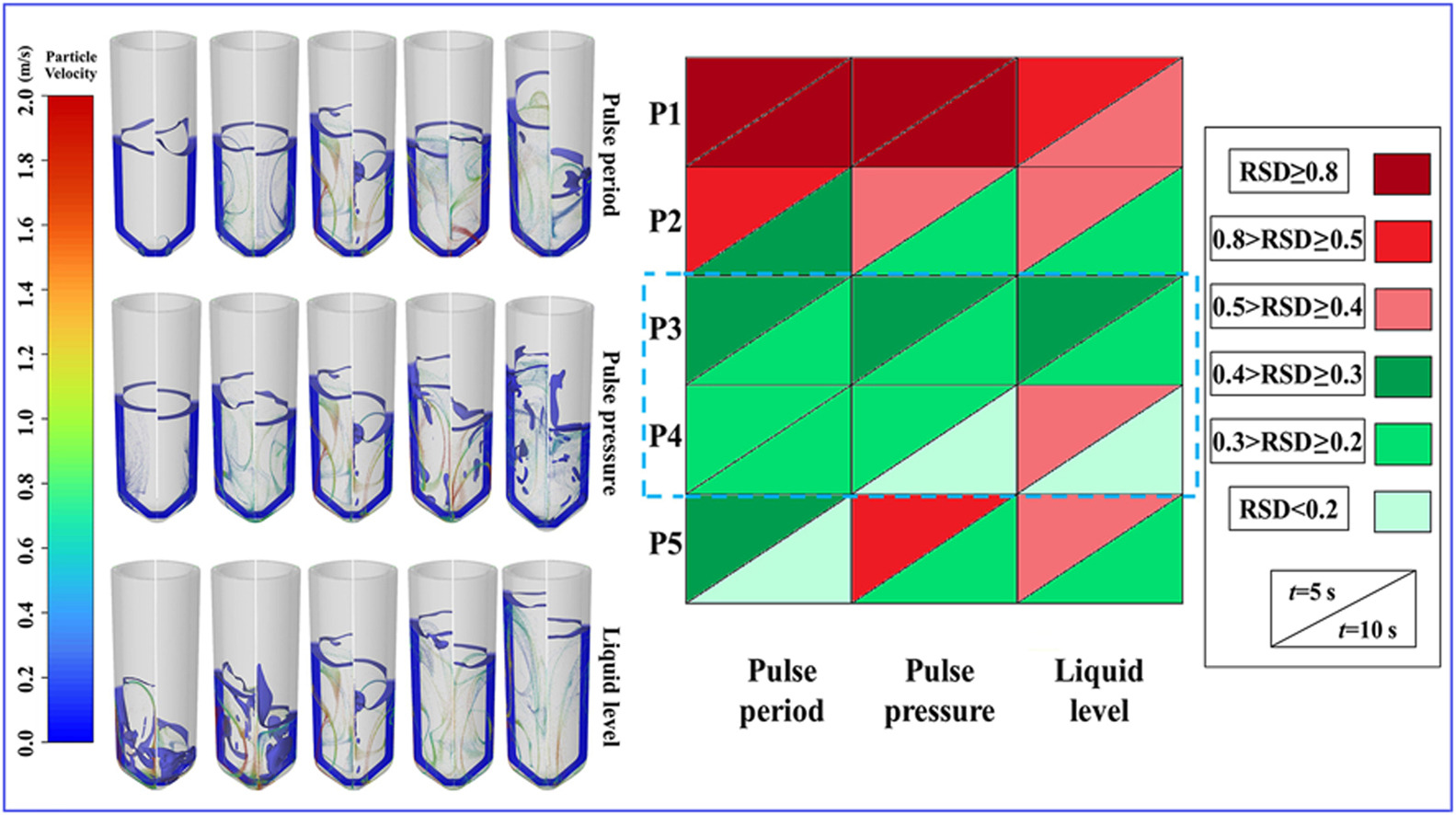• A pulse pressure-driven spent nuclear fuel precipitation reactor was designed.
• A CFD–DEM–VOF model was adopted to investigate the hydrodynamics performance.
• Effects of pulse period,pulse pressure,initial liquid level were evaluated.
• The pulse conditions were optimized based on quantitative analysis.
Efficient and reliable precipitation reactors are of great significance for the recovery of spent nuclear fuel. However, most current spent nuclear fuel precipitation reactors rely on agitation-driven mixing, which suffers from low mixing efficiency and high failure rates. In this study, a pulse pressure-driven spent nuclear fuel precipitation reactor was designed and its hydrodynamics performance were investigated using a CFD–DEM–VOF coupled numerical approach. Three key process parameters were systematically examined, including pulse period, pulse pressure, and initial liquid level. The simulation results revealed that pulse period and pulse pressure significantly influenced hydrodynamic behavior and particle suspension performance, whereas the initial liquid level had a subordinate effect. Under optimized pulse conditions, effective mixing and uniform particle suspension could be achieved regardless of the initial liquid height. Furthermore, a quantitative evaluation of mixing and suspension performance was conducted based on average flow velocity, average turbulent kinetic energy,and the relative standard deviation of particle suspension uniformity. The results demonstrated that efficient fluid mixing and homogeneous particle suspension could be realized under appropriate operating conditions. This study provides theoretical guidance for developing high-performance pulse-driven precipitation reactors and optimizing their operational processes in spent nuclear fuel treatment.

